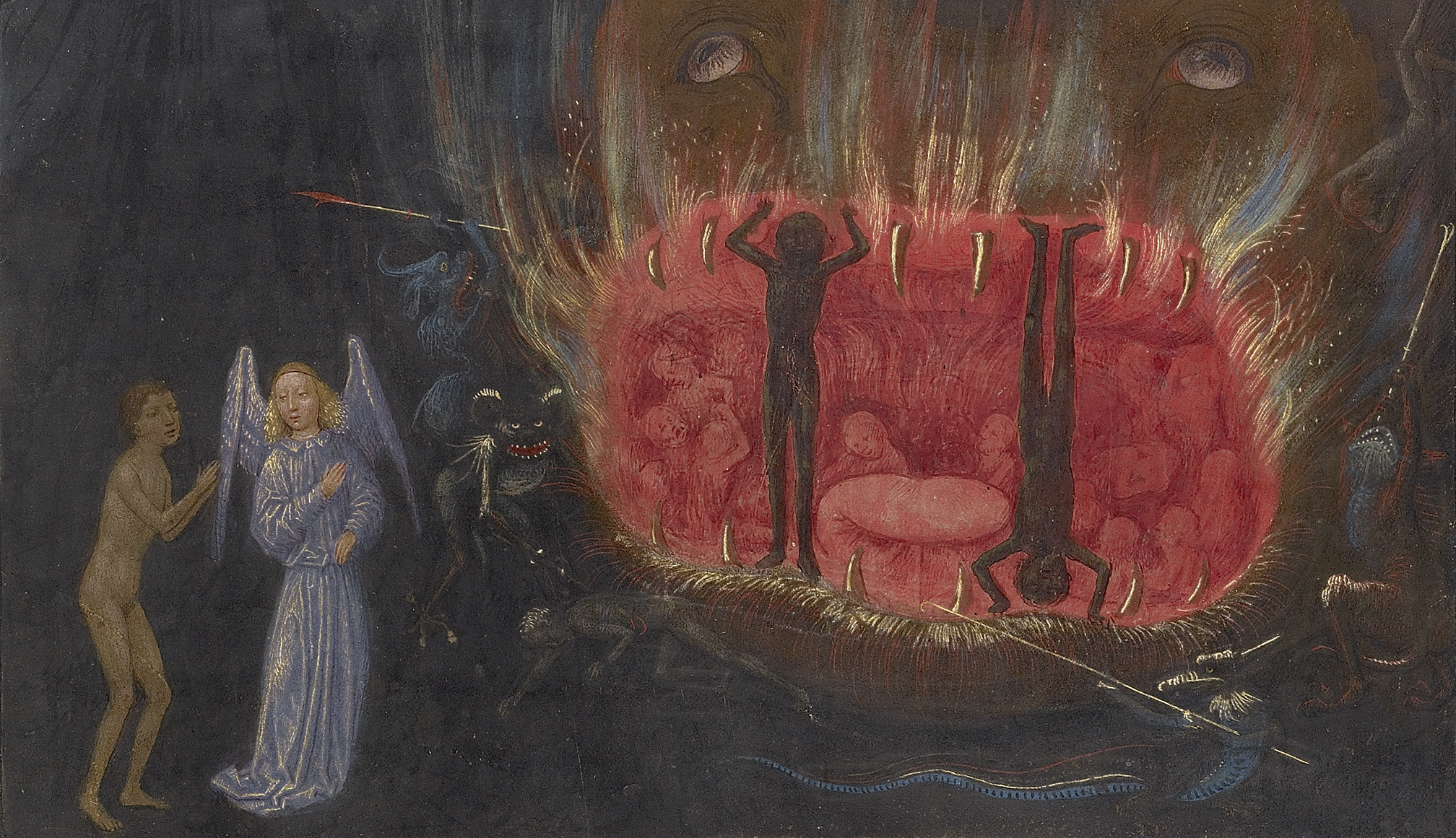The Afterlife has always been a fascinating subject for Men. The exhibition at the Getty Museum explores this recurrent theme with the illustrations of Simon Marmion.
Heaven, Hell, and Dying Well: Images of Death in the Middle Ages, a new exhibition at the Getty Museum.
One of the four aspects of the exhibition represents the descent into Hell and, on display, curators chose to have The Visions of the Knight Tondal illustrated by Simon Marmion.
Of the same artist, you might also want to have a look at La Flora Book of Hours 
La Flora Book of Hours by Simon Marmion
Don’t miss the fantastic “movie trailer” and join Tondal on his tour of the afterlife.
From the Getty website:
[…] The Descent into Hell
Hell. Where is it? What does it look like? What horrors await the sinners there?
In widely read stories such as The Visions of the Knight Tondal and The Divine Comedy, medieval audiences followed the main characters into the depths of the underworld, closely observing the infernal spectacle.
These vivid accounts were frequently illustrated with terrifying images that exceeded even the most gruesome textual descriptions. The dialogue between the artistic imagination and a burgeoning scientific interest in the afterlife produced an idea of hell as a real, physical place infused with wild fantasies.
Originally written in the 1100s, The Visions of the Knight Tondal is the story of a wayward Irish knight whose dreamlike journey through hell and heaven teaches him the value of penitence. In the only known illustrated version of this tale, the Flemish artist Simon Marmion faithfully followed the text by depicting hell as a terrifying underground place with regions devoted to various sins—and punishments for them—and the awe-inspiring realms of heaven reserved for those who lived good and honest lives.
The inventive images bring the story to life through atmospheric effects and expressive characters.
The dialogue between the artistic imagination and a burgeoning scientific interest in the afterlife produced an idea of hell as a real, physical place infused with wild fantasies.


